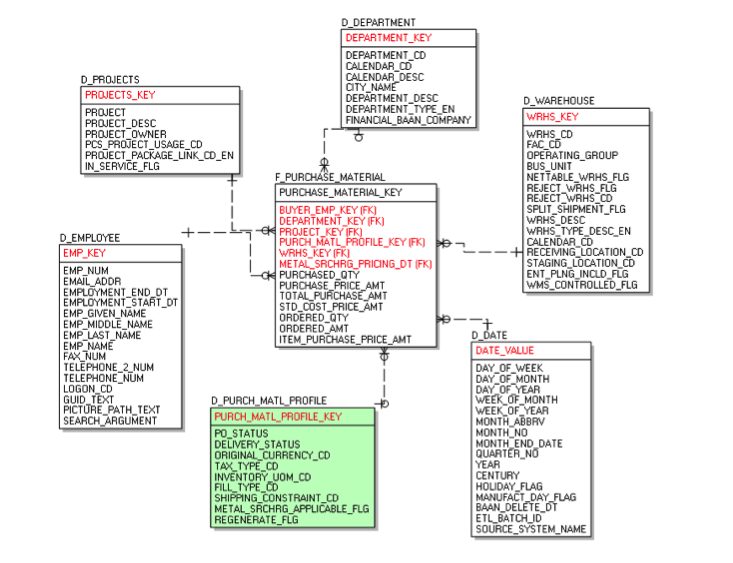Table Of Contents
- Database Design – Naming Conventions
- Principles of Naming Conventions
- Industry Standards
Although all of that earned him the reputation of a “Cool Dude”, it was not possible to follow his style in our Data Warehouse. So, I had to be the geek & explain to the team the way we name database objects here…
An observation that I made based on this experience was that when we layout standards for everyone the progress is rapid. The computer industry has experienced the value of standardization for a long. When we standardized the formatting of a disk drive we got drives that could be read by both Unix and Windows systems, CDs, DVDs, Flash Drives, all have a standard format for information exchange. When we standardized the TCP/IP protocol we can connect all the computers and the internet was born! When we standardized the HTML protocol the world wide web was born. I could give you many more examples but you get the point. So why can’t we humans follow simple naming conventions? Particularly when it comes to naming table names and column names we suddenly get creative. It’s almost like we take for granted an authority to be different.
What is the Importance of Naming Conventions in Database Design?
When it comes to data modeling, especially in a multi-tier, team-based, fast-growing environment, the “Name” of an object really becomes crucial as it defines the objects. Naming objects becomes much more than just tagging a word to a face. Naming becomes complex when different people have different meanings for the same name and also have different names with the same meaning. Everyone has their own style that comes with the personality, personal preference as well as past experiences, like the one in my earlier story.
Let’s try to understand the principles behind naming conventions in database modeling (database design) with specific industry standards & examples. I am going to make this more generic & not specific to our environment.
3 Principles of Naming Conventions
By combining the words of names in a specific way, standardized data component names are created. The rules will vary for each organization, but the basic principles for developing rule sets are constant. What should I name my database?
There are three kinds of rules that form a complete naming convention:
- Semantic rules are based on the meaning of the words used to describe
- Syntax rules prescribe the arrangement of words within a name
- Lexical rules concern the language-related aspects of names
I. Semantic Rules:
These are rules based on the meaning of the words used to name data components.
- Subjects: entity or subject terms are based on the names of data objects or subjects that are found in data models (entities) or object models (object classes).
- Modifiers: can be that subject’s properties or qualifiers that are used interchangeably when naming data objects.
- Class Words: describe the type of data that a column or attribute contains. Class words data modeling is words that distinguish an individual category or classification of data or domain. This is a classification of the type of data or domain.
II. Syntax Rules:
These rules specify the arrangement of name components. Examples of Syntax Rules are:
- The subject or object term occupies the leftmost position in the name unless it is used as a modifier to another subject.
- Modifier terms follow the subject. The order of the qualifiers in a name is used to make the name complete and clear to the intended audience. Use subject, property, and/or qualifier terms as needed.
- For columns and attributes, the last term should be the class word at the rightmost position.
III. Lexical Rules
These rules determine the standard look of names.
Examples of Lexical Rules are:
- Nouns are used in the singular form
- Verbs are always in the present tense
- No special characters are allowed
- All words are separated by underscores
- All words are in upper case
- Listed/approved abbreviations and acronyms
Industry Standards of Database Naming Conventions
I. Definitions & Common Rules
Entity or Table
An entity is the representation of a distinguishable person, place, thing, concept, event, or state that has characteristics, properties, and relationships. A table is a physical collection of data about a person, place, thing, concept, event, or state. A table may correspond with an entity.
Attribute or Column
A column or attribute contains a specific detail about an entity or table. A column or attribute should not contain multiple values such as arrays or concatenated values.
Common Rules
- The name of an entity/table or attribute/column should enable its audience to identify and locate it within its context. Therefore, each entity/table or attribute/column name must be unique within its context (an entity within its model, a table within a database schema, an attribute within an entity, or a column within a table).
- The name of an entity/table or attribute/column should be a declaration of the classification of the data it contains or will contain and therefore it should be a noun or a noun phrase in the singular form and should follow a classification declarative format.
- The name of an entity/table or attribute/column should enable designers, developers, and business personnel to effectively know what is in it or what to place in it. It should describe its content (what it is), rather than how it is used, processed, populated, or decoded.
II. Formats & Examples of Naming Conventions
Entity or table name should be a noun phrase constructed with the following format:
Subject Modifier
Attribute or column names should be a noun phrase constructed following the format:
Subject Modifier Class
Subject indicates the class of information that the entity or table describes; it provides the proper naming context for the modifier. Subjects are nouns that name thing.
Subjects may be composed of several terms or words.
Examples: Employee, Purchase Order, Item, etc.
The modifier is an optional component of the entity or table name that further qualifies the name. The modifier is one or more properties and one or more qualifiers.
Examples: Project Installment, Employee Contact, etc.
Class or class word classifies the type of information being represented by the column or attribute.
Examples: Employee Number, GL Account Number, Purchase Order Status Code
All of this might sound boring to all the Shakespeare types out there, but I know for sure that all the Data Architects would agree & appreciate these naming conventions in database modeling (database design)!
After all, this makes our lives easier & organized and data interchangeable. I will follow this up with a post on data types and data quality rules that change data into information. How to populate missing values? How to check for ranges of values for each field? How to test data quality on the dimensions of completeness, accuracy, consistency, timeliness, etc.



No comments yet.